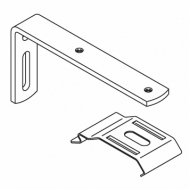When people talk about p.o.guy and mortimer wheeler, they’re often diving into the worlds of archaeology and history. But you might be wondering, what’s the big deal about these two names? Why should you care about these figures, especially if archaeology isn’t your thing? Well, buckle up, because there’s more to these guys than just digging up old relics.
p.o.guy and mortimer wheeler were pioneers in making archaeology not just about artifacts but about understanding human lives, societies, and the ways people interacted with their environment. They didn’t just stop at uncovering artifacts; they wanted to bring history closer to people and make it meaningful.
Let’s break down their work, their impact, and why they still come up in conversations about archaeology.
Who Was p.o.guy and mortimer wheeler?
p.o.guy and mortimer wheeler was an archaeologist who made his mark on Middle Eastern archaeology, specifically focusing on ancient Israel. He played a key role in excavations that revealed some of the most important findings in understanding early human settlements and religious practices in the area.

Key Contributions of p.o.guy and mortimer wheeler
- Excavations in Megiddo: Guy is especially known for his work at Megiddo, a site in modern-day Israel that holds layers of history dating back thousands of years. Megiddo is often associated with biblical narratives, making it a focal point for both historians and religious scholars.
- Popularizing Stratigraphy: One of Guy’s significant contributions was his emphasis on stratigraphy—the study of layers within an archaeological site. By examining these layers, archaeologists could determine the timeline of human activity, understanding which structures came first and how civilizations built upon each other.
- Building a Narrative: Guy wasn’t just interested in stones and bones. He wanted to reconstruct how people lived, worked, and interacted in ancient communities. This perspective set him apart from other archaeologists of his time.
Who Was Mortimer Wheeler?
If p.o.guy and mortimer wheeler focused on Middle Eastern archaeology, Mortimer Wheeler brought his expertise to India and the United Kingdom, making contributions that are still influential today. Known for his dynamic and engaging approach, Wheeler believed in bringing archaeology to the public. He wasn’t just a “behind-the-scenes” researcher; he was a storyteller, almost like a showman of archaeology.
Key Contributions of Mortimer Wheeler
- Grid System in Excavations: One of Wheeler’s most practical contributions was the grid system for excavation. This method allowed archaeologists to excavate sites systematically, dividing them into smaller, manageable sections. By using this approach, Wheeler made it easier for archaeologists to map and record their findings accurately.
- Public Engagement: Wheeler made archaeology accessible to the everyday person. He believed in reaching out to the public, explaining why archaeology matters and what these findings mean for our understanding of history. His TV appearances in the UK, like on the BBC, made him a familiar face and helped people see the human side of archaeology.
- Indian Archaeology: After World War II, Wheeler served as the Director-General of the Archaeological Survey of India. His work there brought significant discoveries from ancient India to the world stage, providing insights into civilizations that predate much of recorded history.
Why Are p.o.guy and mortimer wheeler Still Relevant?
Setting Standards for Archaeology
p.o.guy and mortimer wheeler and Wheeler didn’t just excavate sites—they set standards and practices that are still in use today. Their methods, especially Wheeler’s grid system, have become foundational in archaeological methodology.
These techniques help archaeologists today work in a way that’s meticulous, methodical, and mindful of preserving historical integrity. If you think about it, much of what we know about ancient sites owes a debt to the standards these two set.
Bridging History and the Public
Archaeology can seem distant, like something that happens in deserts or ancient tombs, far from our daily lives. But Guy and Wheeler wanted to change that. They both took steps to make archaeology accessible, with Wheeler even becoming a bit of a celebrity in his day. His TV appearances brought ancient history into people’s homes, showing them that archaeology is not just about “p.o.guy and mortimer wheeler”—it’s about understanding the people of the past and connecting with them on a human level.
Questioning Old Narratives
Both of these archaeologists challenged existing historical narratives. For instance, in the Middle East, Guy’s work at Megiddo shed light on the cultural and religious practices that shaped early civilizations. Wheeler’s work in India, meanwhile, added new dimensions to our understanding of ancient Indian society and its sophistication.
By questioning established ideas and pushing boundaries, they helped lay the groundwork for a more nuanced view of history, one that acknowledges the complexity and diversity of ancient cultures.

How Did Their Work Influence p.o.guy and mortimer wheeler?
Standardized Techniques
Without Guy and Wheeler, archaeology might still be about randomly digging and hoping for the best. The meticulous techniques they championed are what make archaeology a true science today. The grid system, the study of stratigraphy, and the importance of recording everything in detail all trace back to their influence.
Ethics and Preservation
In their time, the ethics of preservation weren’t as strong as they are today. Guy and Wheeler, though, had an early understanding of the importance of keeping historical artifacts within context. They showed that artifacts shouldn’t just be removed from sites for display but preserved in their original surroundings whenever possible to tell a fuller story.
FAQs About p.o.guy and mortimer wheeler
What is the significance of the grid system in archaeology?
The grid system, developed by Mortimer Wheeler, organizes excavation sites into sections, allowing archaeologists to dig with precision. It ensures that each find is accurately documented within its location, making it easier to piece together a site’s history.
Why was Megiddo an important site for p.o.guy and mortimer wheeler?
Megiddo, with its biblical connections, is one of the most archaeologically rich sites in Israel. Guy’s work here provided insights into religious practices and social structures that were vital in shaping early civilizations in the region.
How did Mortimer Wheeler influence public perception of archaeology?
Wheeler believed that archaeology should be accessible, not exclusive. His TV appearances brought archaeology into people’s homes, showing the excitement and importance of historical discoveries. It was a way of making history feel real and relevant to everyday life.
What were Mortimer Wheeler’s contributions to Indian archaeology?
Wheeler’s work in India uncovered parts of the Indus Valley civilization, among other sites, showcasing India’s rich historical contributions and encouraging local preservation efforts. His work remains a cornerstone in Indian archaeology.
Why are Guy and Wheeler still taught in archaeology classes today?
Their methods, standards, and approach to public engagement set a benchmark. They emphasized both the scientific and human aspects of archaeology, which are now seen as essential in understanding and preserving history.
A Legacy Beyond Artifacts
The story of p.o.guy and mortimer wheeler isn’t just about excavations; it’s about how they helped bridge the past and the present.
They made it possible for archaeology to be something everyone could appreciate, showing that history isn’t just a series of dates but a series of lives, stories, and choices that shaped the world.
Through their methods, their teaching, and their dedication to public engagement, Guy and Wheeler transformed archaeology from a dusty, academic pursuit to a vibrant, engaging exploration of humanity.
p.o.guy and mortimer wheeler names might appear in textbooks and lecture halls, but their influence goes far beyond academia. They brought humanity into archaeology, a spirit that still echoes in digs around the world.
Whether you’re looking at ancient pottery, stone tools, or monumental structures, remember: these aren’t just artifacts. They’re a glimpse into the lives of people who walked the earth long before us, preserved through the careful, thoughtful work of archaeologists like Guy and Wheeler.







